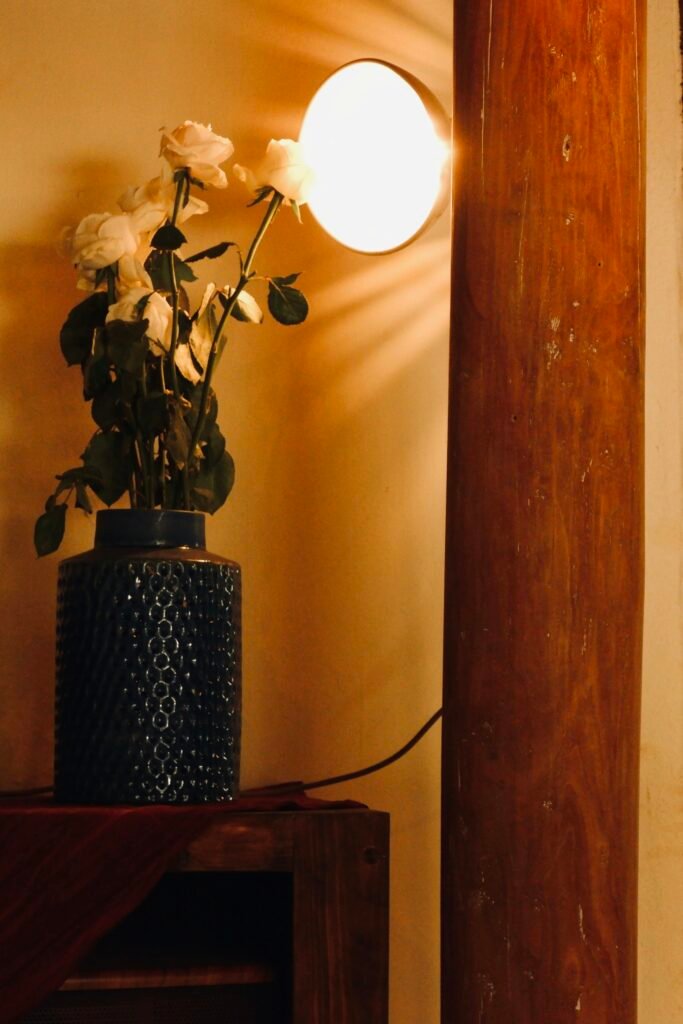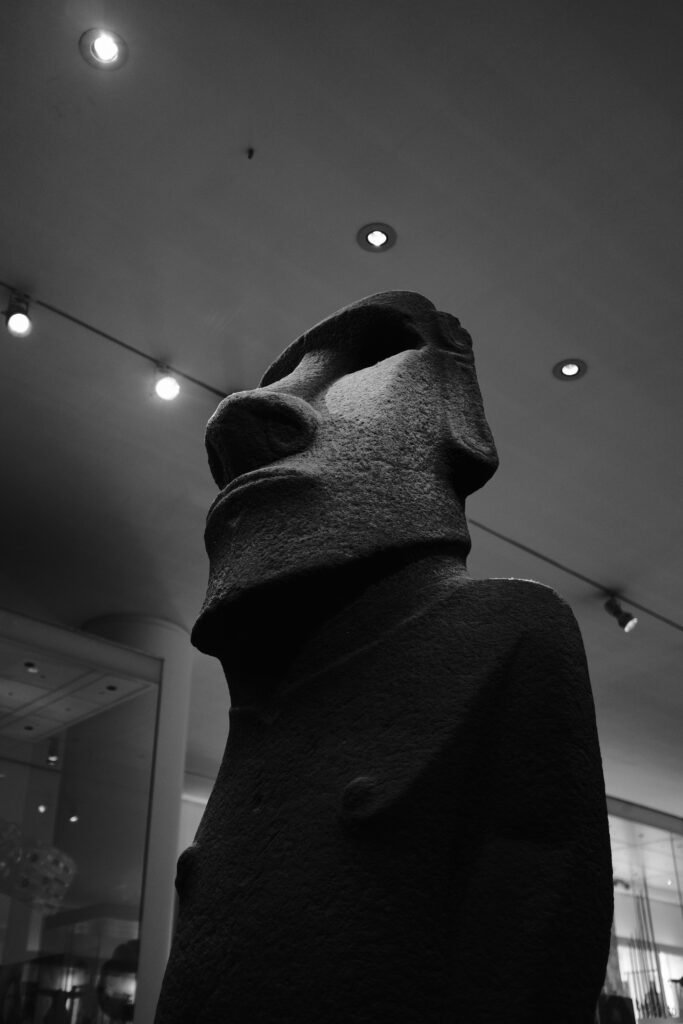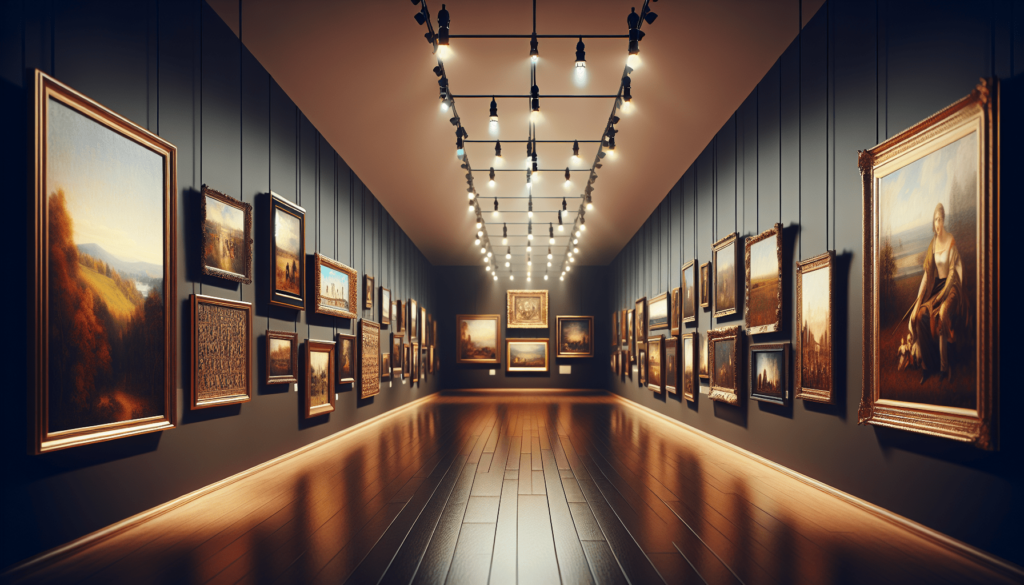Welcome to “Enhancing your Art Display: Lighting Tips for Galleries.” In this article, you will learn valuable tips on how to illuminate artwork effectively in a gallery setting. From the importance of proper lighting to the best techniques for showcasing different types of art, you will discover how lighting can truly enhance the viewing experience for visitors. Let’s dive into the world of art gallery lighting and make your exhibits shine! Have you ever visited an art gallery and noticed how the lighting truly enhances the beauty and impact of each piece on display? Lighting plays a crucial role in showcasing artwork in the best possible way, drawing attention to details and creating a captivating atmosphere for visitors. Whether you are setting up a gallery for the first time or looking to improve your existing display, these lighting tips will help you create a visually stunning and engaging art exhibition.

Importance of Proper Lighting in Art Galleries
Proper lighting is essential in art galleries to not only illuminate the artwork but also to create a mood and ambience that enhances the viewing experience. The right lighting can accentuate colors, textures, and details of each piece, making them more visually appealing and captivating to the audience. On the other hand, poor lighting can distort colors, create glare, cast shadows, and ultimately detract from the overall impact of the artwork.
When you walk into an art gallery, the lighting should not only highlight the artwork but also guide your eyes through the space, creating a cohesive and engaging visual journey. By strategically placing lights and adjusting their intensity, direction, and color temperature, you can transform a mundane display into a captivating and immersive art experience.
How Lighting Affects Perception of Artwork
Lighting plays a significant role in how we perceive and experience artwork. The intensity, color, and direction of light can dramatically alter the appearance of a piece, affecting its colors, textures, and overall mood. Natural light, for example, brings out the vibrancy of colors and adds a sense of warmth and authenticity to the artwork, while artificial light can be used to create specific effects and highlight certain aspects of the piece.
When choosing lighting for your art gallery, consider how different types of lights will interact with the artwork and the space as a whole. Experiment with different lighting setups to see how they affect the perception of the artwork and adjust accordingly to achieve the desired visual impact.

Types of Lighting for Art Galleries
There are several types of lighting fixtures commonly used in art galleries, each serving a specific purpose and creating a different effect. Understanding the characteristics of each type of lighting will help you choose the most suitable option for your gallery and artwork on display.
Track Lighting
Track lighting is a versatile and popular choice for art galleries because it allows you to easily adjust the position and direction of light fixtures to illuminate specific pieces or areas. Track lighting fixtures can be mounted on the ceiling or walls and come in various sizes and styles to suit different display needs. They are ideal for highlighting individual artworks or creating focal points within the gallery.
Track lighting is also energy-efficient and easy to install, making it a practical choice for galleries looking to enhance their display without breaking the bank. By using track lighting, you can create a dynamic and flexible lighting setup that adapts to different exhibitions and artworks.
Picture Lights
Picture lights are small, adjustable fixtures designed to illuminate individual pieces of artwork, such as paintings, photographs, or sculptures. These lights are typically mounted above or below the artwork, casting a focused beam of light to highlight the details and textures of the piece. Picture lights are perfect for creating a dramatic effect and drawing attention to specific artworks within a gallery.
Picture lights come in various sizes, styles, and finishes to complement different types of artwork and gallery aesthetics. They can be mounted directly onto the wall or attached to frames, providing a discreet and elegant lighting solution for showcasing individual pieces in your gallery.
Recessed Lighting
Recessed lighting, also known as downlighting, involves installing light fixtures into the ceiling or walls to create a seamless and integrated lighting effect. Recessed lights are a popular choice for art galleries because they provide a clean and modern look while illuminating the artwork evenly and without casting harsh shadows.
Recessed lighting is ideal for galleries with minimalistic or contemporary design aesthetics, as it allows the artwork to take center stage without distracting from the overall display. By strategically placing recessed lights throughout the gallery, you can create a balanced and uniform lighting scheme that enhances the viewing experience for visitors.

Best Practices for Lighting Art Galleries
Now that you are familiar with the different types of lighting fixtures used in art galleries, let’s explore some best practices for lighting your gallery effectively and showcasing your artwork in the best possible light.
Consider Color Temperature
Color temperature refers to the warmth or coolness of light, measured in Kelvin (K). Different light sources have varying color temperatures that can significantly impact how colors appear in the artwork. Natural daylight has a color temperature of around 5500K, which is considered neutral and ideal for showcasing most artworks.
When selecting artificial lighting for your gallery, choose fixtures with a color temperature close to natural light to ensure accurate color rendering and minimal color distortion. LED lights are a popular choice for art galleries because they come in a range of color temperatures and can be dimmed or adjusted to create the perfect lighting conditions for different artworks.
Use Dimmers for Flexibility
Dimmers are essential tools for adjusting the intensity of light fixtures in your gallery, allowing you to create different effects and moods depending on the exhibition and artwork on display. Dimmable lights give you the flexibility to control the brightness of the lighting, highlight specific pieces, or create a more subdued atmosphere for special events or evening receptions.
By installing dimmers on your lighting fixtures, you can easily customize the lighting levels in your gallery to suit different needs and preferences. Dimmers also help reduce energy consumption and extend the lifespan of your light bulbs, making them a practical and cost-effective solution for art galleries.
Avoid UV Damage
Ultraviolet (UV) light can cause irreversible damage to artwork by fading colors, degrading materials, and affecting the overall condition of the piece. To protect your artwork from UV damage, avoid using light fixtures that emit UV radiation or install UV filters on your existing fixtures to block harmful rays.
LED lights are a safe and UV-free lighting option for art galleries, as they produce minimal UV radiation and heat compared to traditional light sources. By choosing LED lights with UV filters or coating, you can ensure that your artwork remains vibrant and preserved for years to come.
Create Layers of Lighting
Creating layers of lighting in your gallery involves combining different types of light fixtures, such as track lighting, picture lights, and recessed lights, to create depth, contrast, and visual interest. By layering lights with varying intensities, directions, and color temperatures, you can highlight different aspects of the artwork and create a dynamic and engaging display.
Start by illuminating the walls and overall space with ambient lighting, then use accent lighting to draw attention to specific artworks or areas within the gallery. Finally, consider adding focal lighting to highlight individual pieces or create dramatic effects that enhance the overall atmosphere of the exhibition.
Balance Natural and Artificial Light
Balancing natural and artificial light in your gallery is essential for creating a harmonious and visually appealing display. Natural light adds a sense of warmth and authenticity to the artwork, while artificial light provides control and consistency in lighting conditions. By strategically placing windows, skylights, or light tubes in your gallery, you can maximize the benefits of natural light while minimizing its potential drawbacks.
To complement natural light, use artificial lighting to fill in any shadows, adjust the color temperature, and create a cohesive lighting scheme that enhances the viewing experience. By striking the right balance between natural and artificial light, you can create a dynamic and inviting ambiance that showcases your artwork in the best possible way.

Conclusion
In conclusion, proper lighting is crucial for enhancing your art display in galleries. By understanding the importance of lighting, choosing the right fixtures, and implementing best practices, you can create a visually stunning and engaging exhibition that captivates and inspires your audience. Experiment with different lighting setups, adjust the color temperature, use dimmers for flexibility, and balance natural and artificial light to create a cohesive and captivating display that showcases your artwork in the best possible light. Remember, lighting is not just about illuminating the artwork; it’s about creating an immersive and memorable experience for visitors that leaves a lasting impression.



